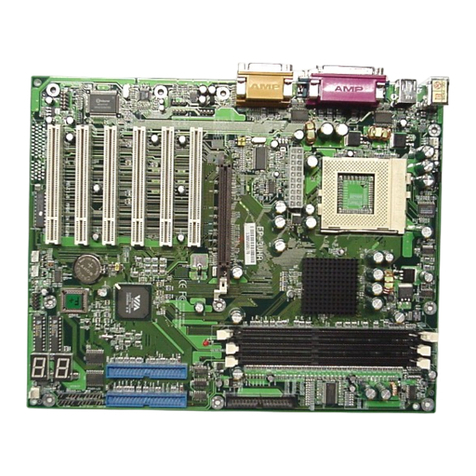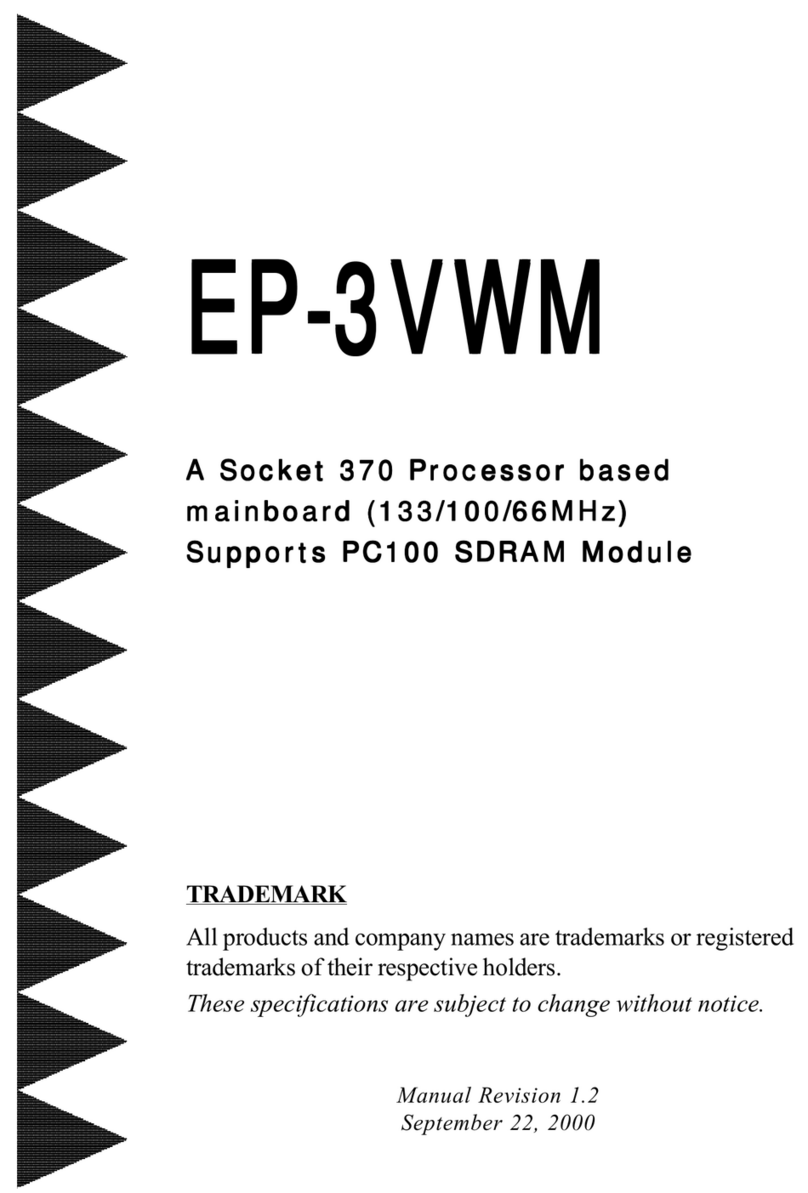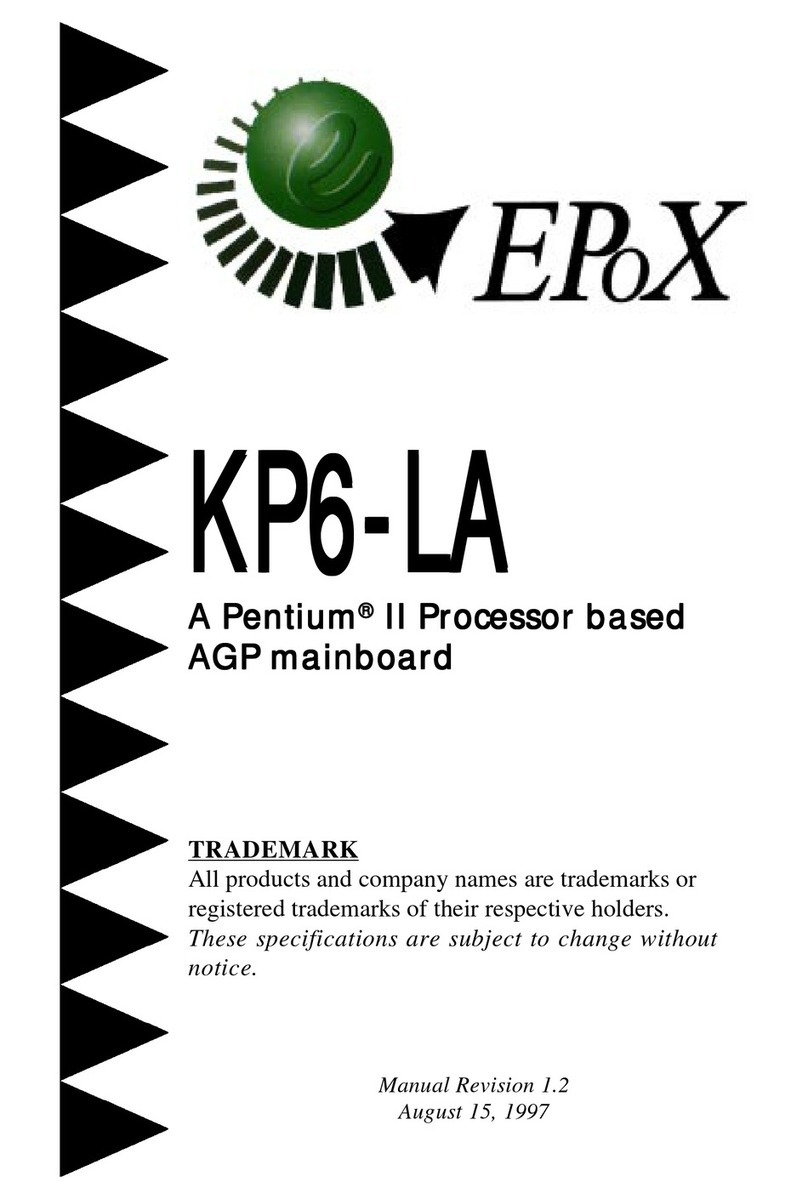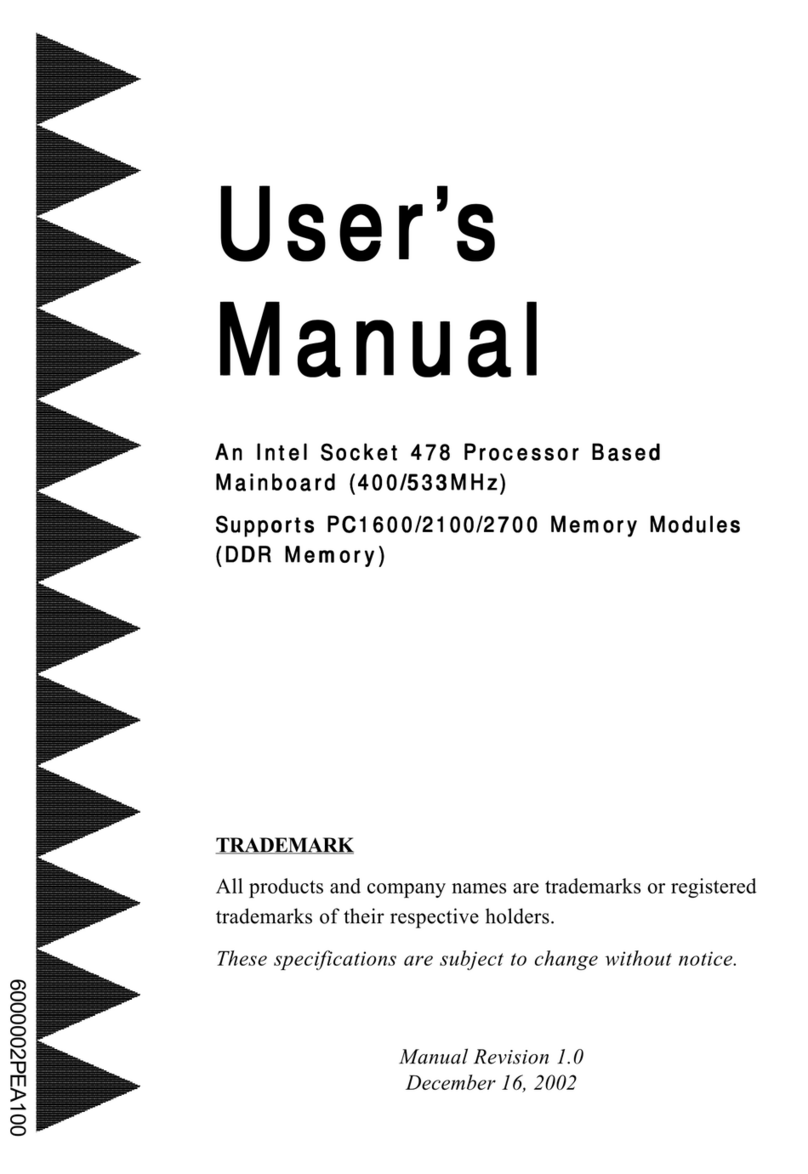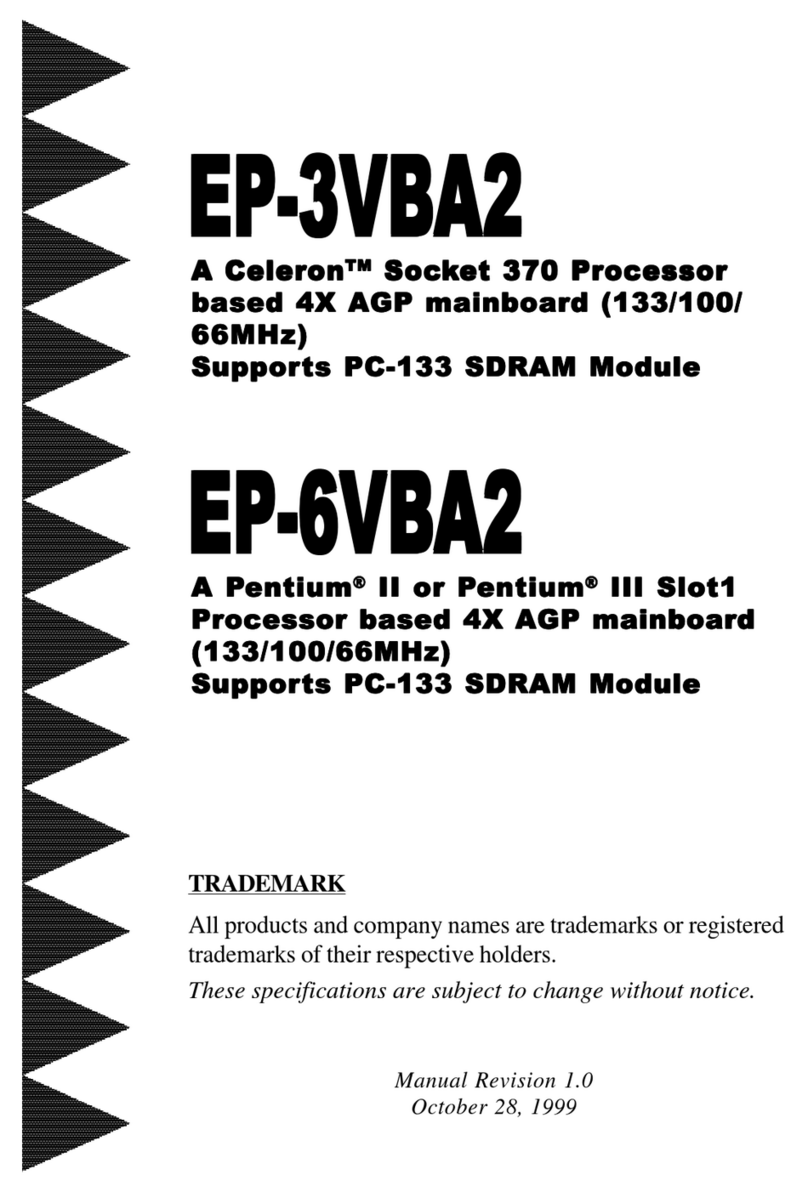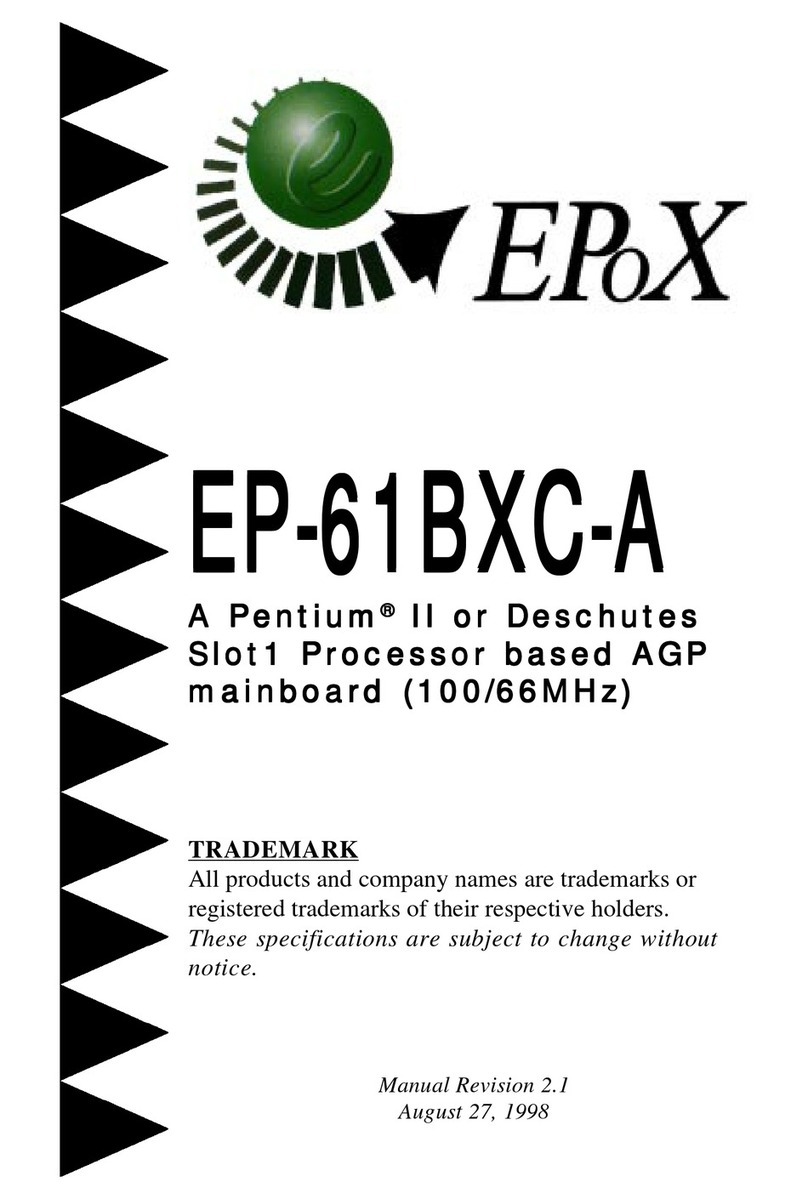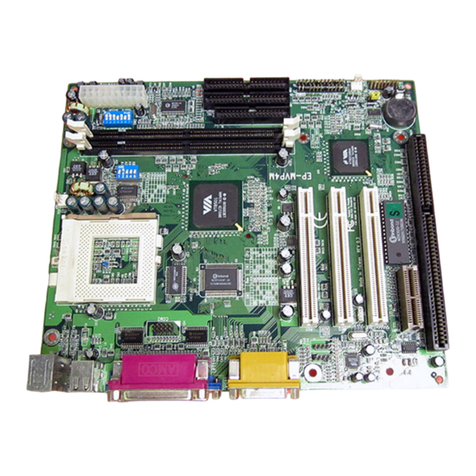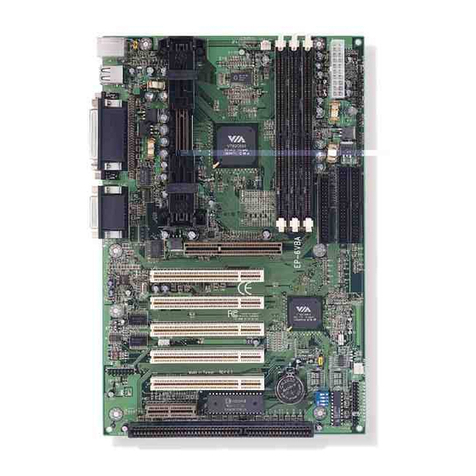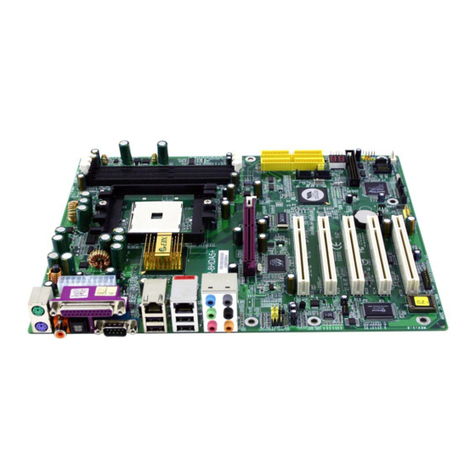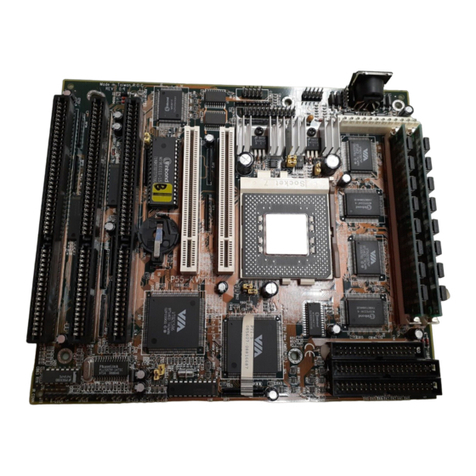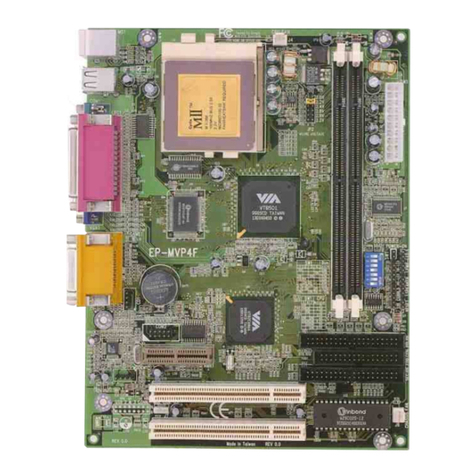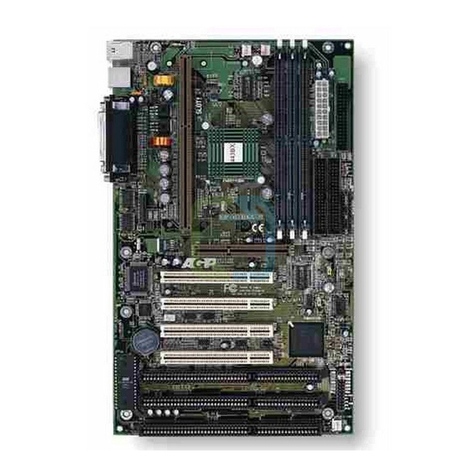
Introduction EP-3WEF2/3WDF2
Page 1-2
Overview
Intel Celeron processors (P.P.G.A.) 370
The Intel Celeron processors provide power to handle the internet, educational
programs, interactive 3D games, and productivit applications. The Intel Celeron
processors at 533, 500, 466, 433, 400, 366, 333 and 300A MHz include integrated L2
cache 128Kb te. The core for the 533, 500, 466, 433, 400, 366, 333 and 300A MHz
processors have 19M transistors due to the addition of the integrated L2 cache
128Kb te. All the Intel Celeron processors are available in the plastic pin grid arra (P.
P.G.A.) form factor. The P.P.G.A. form factor is compatible with the 370 pin socket. All
the Intel Celeron processors are available in the plastic pin grid arra (PPGA) package.
The PPGA package is compatible with the 370 pin socket and provides more flexibilit
to design low cost s stems b enabling lower profile and smaller s stems and provid-
ing the potential for reducing costs of processor retention and cooling solutions. Like
the Intel Celeron processors that utilize S.E.P.P., the Intel Celeron processors that use
P.P.G.A., feature a P6-microarchitecture-based core processor on a single-sided sub-
strate without BSRAM componentr .
The Intel Celeron processor at 533, 500, 466, 433, 400, 366, 333, and 300A MHz. In-
cludes Intel MMX[tm] media enhancement technolog . Offers D namic Execution
technolog .
Includes a 32Kb te (16Kb te/16Kb te) non-blocking, level-one cache that provides
fast access to heavil used data. Intel Celeron processors at 533, 500, 466, 433, 400,
366, 333 and 300A MHz include integrated L2 cache 128Kb te. All the Intel Celeron
processor utilize the Intel P6 microarchitectures multi-transaction s stem bus at
66MHz. The 533, 500, 466, 433, 400, 366, 333 and 300A MHz processors utilize the Intel
P6 microarchitectures multi-transaction s stem bus with the addition of the L2 cache
interface. The combination of the L2 cache bus and the processor-to-main-memor
s stem bus increases bandwidth and performance over single-bus processors.
Intel MMX technolog includes new instructions and data t pes that allow
applications to achieve a new level of performance. Intels MMX technolog is
designed as a set of basic, general-purpose integer instructions that are easil
